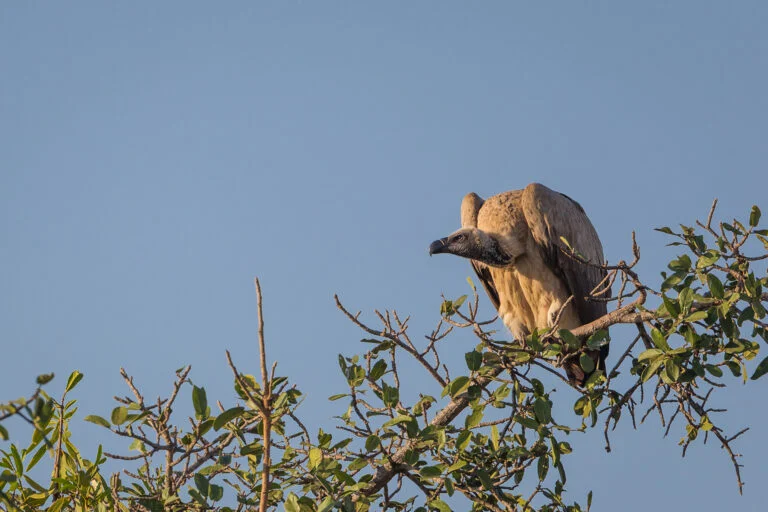
Cape Vulture Conservation: A Hopeful Story Amidst Ongoing Challenges
The Cape vulture, Southern Africa’s only endemic vulture species, has shown positive signs of recovery in some parts of its range, with the overall population stabilizing. In 2021, the species’ conservation status improved from endangered to vulnerable, marking a rare success in vulture conservation efforts across Africa. However, conservationists warn that many challenges remain in protecting this majestic bird from threats such as poisoning and habitat loss.
Earlier this year, the vulture conservation organization Vulpro celebrated the return of Cape vultures to a farm in South Africa’s Eastern Cape province, near Mountain Zebra National Park. This marked the first sighting of the species in the area for 30 years, prompting a wave of optimism among conservationists. “There’s more and more movement and foraging of the birds, and they are now finding these historical areas that they used to occur in and that it’s now safe again,” said Kerri Wolter, CEO of Vulpro.

The Cape vulture's recovery journey has not been easy. Once estimated to have suffered a population decline of up to 70% from 1992 to 2007, it now boasts a stable global population of between 9,600 and 12,800 mature individuals, primarily residing in South Africa. Conservationists like John Davies, senior field officer in the birds of prey program at the Endangered Wildlife Trust, describe the downlisting from endangered to vulnerable as “borderline unheard of.”
However, complacency is a significant risk, as Cape vultures continue to face numerous threats. A particularly devastating incident in May 2025 saw 116 vultures, including this species, die after consuming a poisoned elephant carcass in Kruger National Park. Such poisoning events are stark reminders of the precarious position these birds are in. Wolter expressed concerns about the growing demand for vulture parts driven by “belief-based use,” which poses a huge risk to populations.

In addition to poisoning, energy infrastructure, such as power lines and wind farms, poses a significant threat to Cape vultures. Their large wingspan and their habit of descending rapidly when spotting food places them at high risk of collisions. Wolter's organization rescues around 120 vultures each year, with approximately 80% being victims of these collisions. Ongoing measures to enhance the visibility of power lines are being undertaken, but there is still much work to do.

Ultimately, the story of the Cape vulture serves as both a beacon of hope and a cautionary tale. While ongoing recovery efforts have shown that successful conservation is possible, ongoing threats remind us that complacency cannot be afforded. Conservationists emphasize the need for continuous education, community involvement, and stringent protective measures.
As we reflect on the Cape vulture’s journey, the question remains: what can we as individuals do to support vulture conservation? Let's spark a conversation—leave your thoughts and suggestions in the comments below.